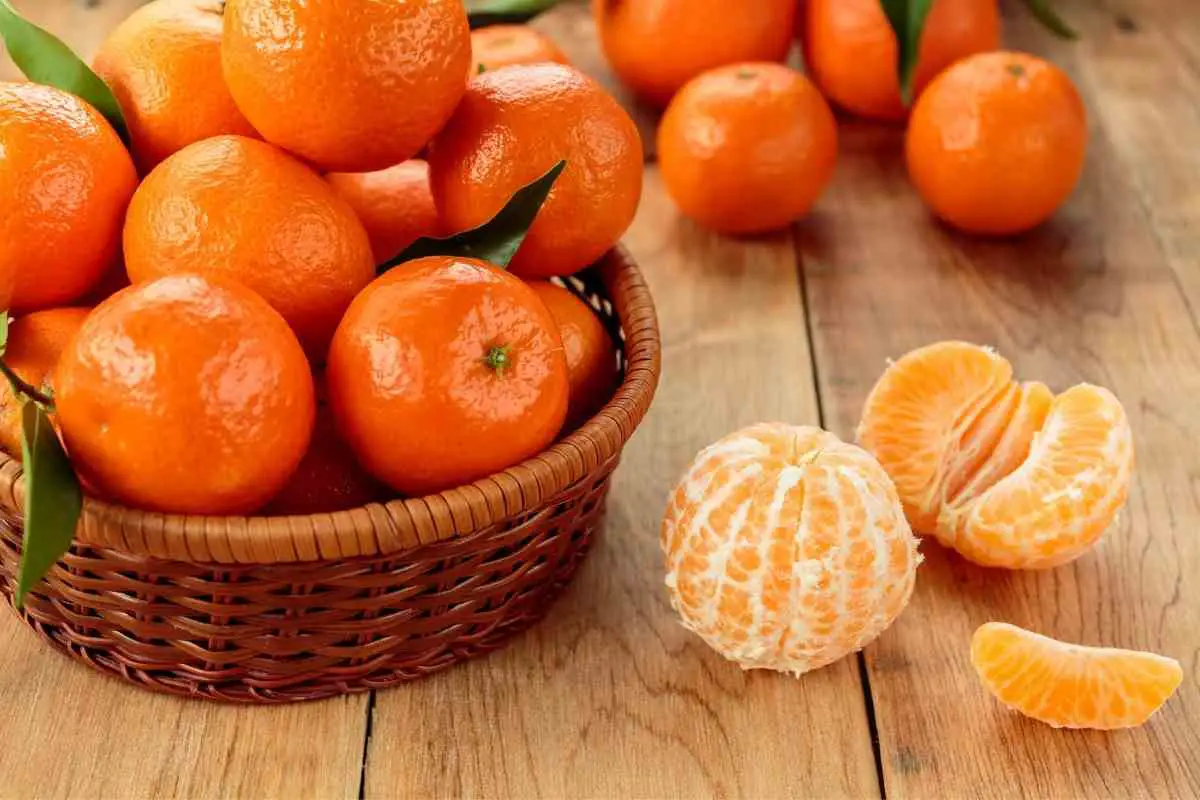Have you ever walked through the fruit aisle of your local grocery store but couldn’t tell the difference between mandarin oranges vs. clementines?
These two small oranges look pretty similar on the shelves, but there are quite different.
Mandarin oranges and clementines are excellent sources of Vitamin C in your body. Besides repairing body cells and tissues, Vitamin C contains various health benefits to our overall well-being.
Nothing beats the sweet citrusy taste of these small oranges than when they are in season. At this point, they are juiciest, as they have naturally ripened on the tree.
But a clear understanding of these orange varieties is necessary to distinguish the two correctly.
Read on to discover the differences between mandarin oranges and clementines.
Varieties of Oranges
There are two classifications of oranges, sweet oranges, and bitter oranges.
Sweet Oranges
These varieties are scientifically known as Citrus x Sinensis. Due to their sweet flavor, they are the typical variety for snacks and juices.
There are six main varieties of oranges.
Mandarins
Mandarins are a hybrid of sweet oranges in the citrus family.
Their difference from other sweet orange varieties is their physical appearance and sweetness.
Clementines, Satsumas, and Tangerines are mandarins, each with contrasting characteristics.
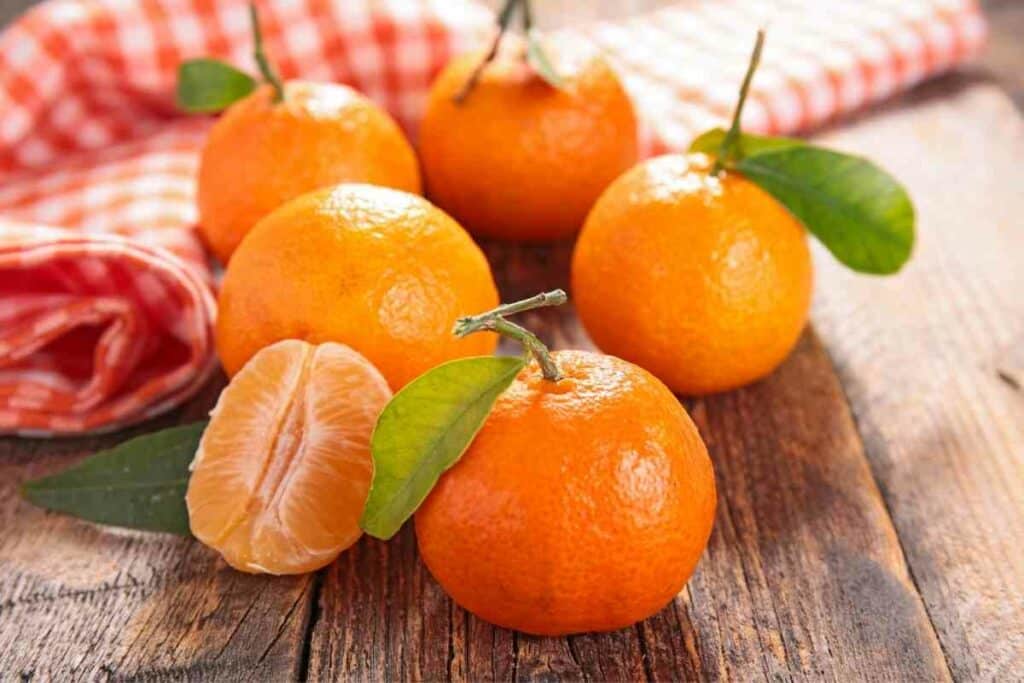
Acidless oranges
Acid-less oranges are the sweet variety without acid and minimal flavor. They mainly ripen in the early seasons of the year.
Unfortunately – Due to their lack of acid, they spoil fast. Hence, they are not common among orange farmers.
The common orange
Famous worldwide, the standard sweet orange is perfect for juicing.
You will likely come across the Hamlin and Valencia varieties in most stores. Still, there are so many other types.
Navel oranges
Most imported sweet oranges in stores are the navel variety.
They make excellent snacks for kids and adults. Types of navel oranges are California navel and Cara Cara navel oranges.
Pigmented or blood oranges
These varieties get their name from the color of the citrus fruit.
Originally from Sicily, mutation changed their color from orange to red.
Deep red or light red are common types of:
- Tarocco
- Moro
- and Maltese blood oranges
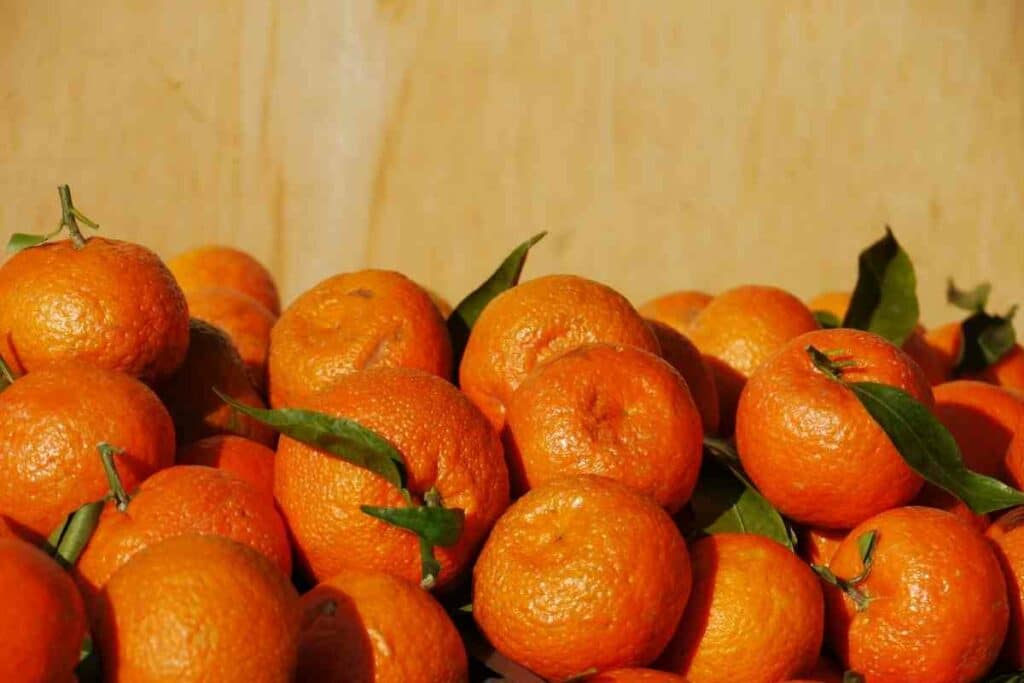
Bitter Oranges
These varieties, although readily available, are not suitable for snacking or juices.
They are excellent for making marmalades, certain perfumes, and flavoring tea.
Common types are Seville and bergamot bitter oranges.
Mandarin Oranges Vs. Clementines: What Are The Differences?
Mandarin oranges and clementines are the most popular in the sweet orange category.
Looking at them, one would find it quite challenging to tell their difference.
They are similar in color, size, and shape. The plants also have the same type of leaves.
However, the two oranges differ in species, among other characteristics.
They include the following.
Definition
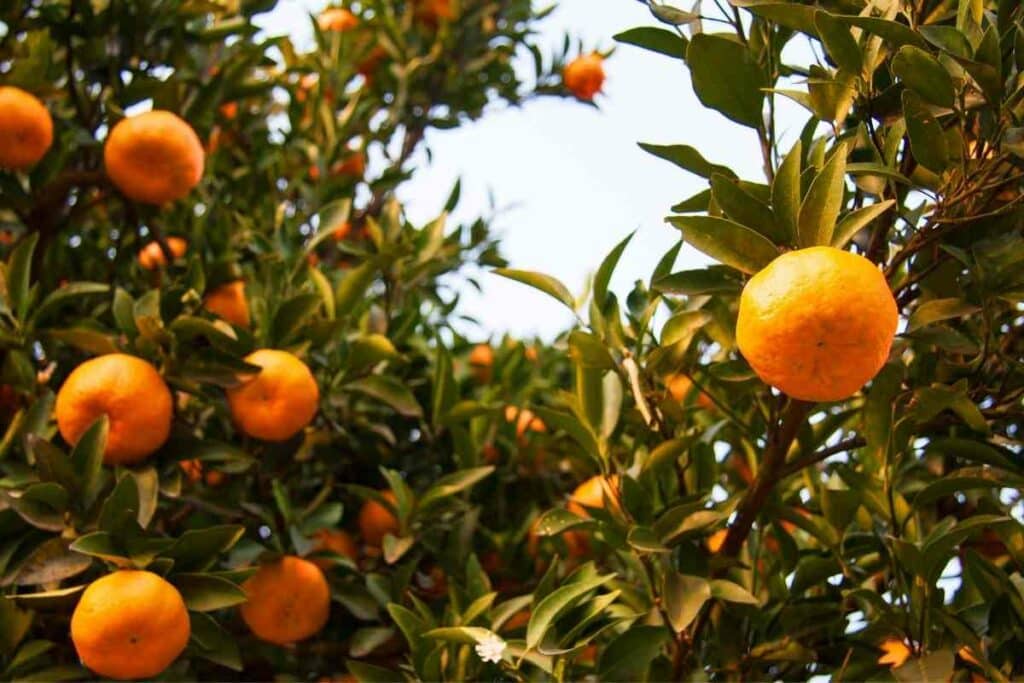
The scientific name of mandarin oranges is Citrus reticulata. They are light orange in color and small in shape.
The sub-varieties of mandarin oranges are tangerines, clementines, and satsumas.
The scientific name of clementines is Citrus x Clementina. Clementines are a variety of mandarin oranges, but not all mandarins are clementines.
However, all clementines are of mandarin origin. Besides being smaller than mandarin oranges, clementines have a darker orange color.
Origin
Mandarin oranges were among the first variety of sweet oranges.
Their origin is in China, India, Japan, and the Philippines.
Currently grown worldwide, mandarin oranges thrive in a colder climate than other sweet oranges. They also tolerate drier areas, although too much cold can spoil them.
On the other hand, clementines originate from Algeria, a country in North Africa.
A French missionary, Clement discovered an accidental mix of two citrus species in the early 1900s.
Thus, the clementine hybrid orange got its name from him.
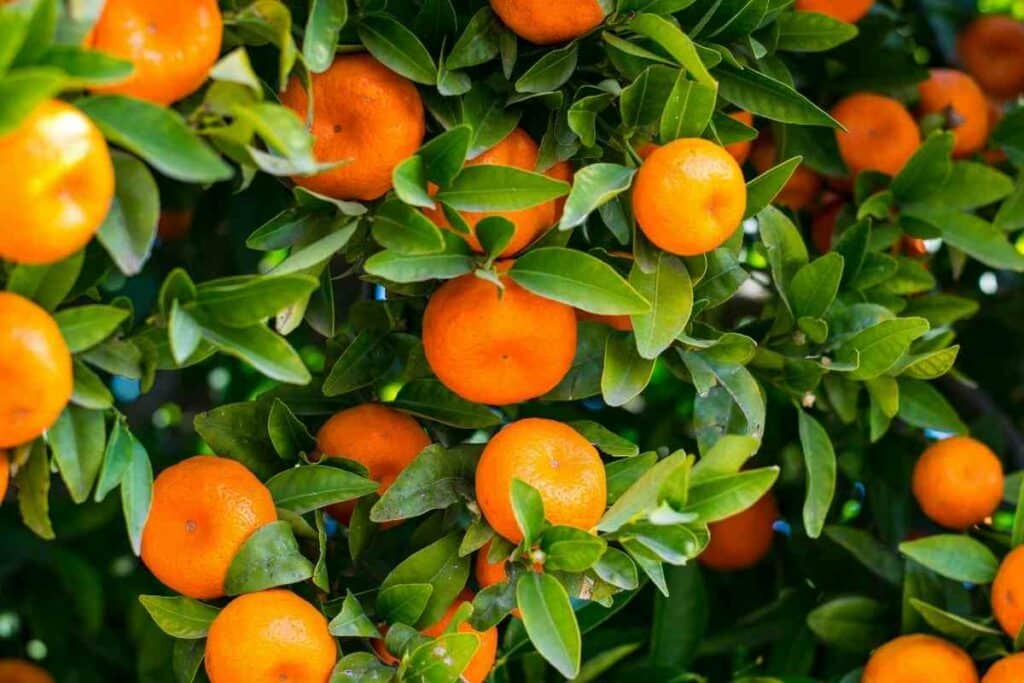
Clementines are a mix of mandarins and bitter oranges. They are now quite common in China, producing over 15 million pieces annually for import.
Nutrients
Mandarin oranges contain more calories and potassium than Clementines.
Single mandarin orange contains about 50 calories, while clementine has 40 calories.
However, Clementines have the most amount of Vitamin C per fruit. Mandarin oranges have Vitamin A, which is lacking in Clementines.
Skin
The skin on Mandarin oranges is relatively thin, making them quite tender to peel.
The delicate skin makes them difficult to ship as they bruise easily.
Clementines, on the other hand, have thicker tough skin.
In Addition – Peeling them is effortless, and they are well-protected from rough handling or shipping.
Seeds
Mandarin oranges have seeds, which makes them difficult to eat, especially for young children.
Clementines are seedless, making them ideal for an introduction to weaning babies and toddler snacks. Juicing clementines is also convenient.
Storage
Due to their thin skin, mandarin oranges lose moisture quickly. Their shelf life is around 2-3 weeks.

However, clementines have thick skin which retains moisture properly. They can last up to a month if stored under the right conditions.
Number of fruit pieces
Structurally, mandarin oranges have around nine pieces of fruit in the round flesh.
On the other hand, clementines may contain over ten pieces of fruit in the fleshy fruit.
Flavor or taste
There is a clear difference in how the two citrus fruits taste.
Mandarin oranges tend to have a sharp sour taste, especially those grown in cooler regions.
Additionally, they have a more potent aroma than clementines. Clementines are primarily sweet but have a milder scent.
Ripe Season
Mandarin oranges are in season during the cool months of November up to April. Whereas, Clementines are in season from October to January.
If you are harvesting either of these fruits, the best ones to pick are the largest with the smoothest skin.
A Quick Look At The Differences Between Mandarin Orange Vs. Clementines
Here is a table summarizing the common differences between mandarin oranges and clementines.
| Mandarin Orange | Clementines | |
|---|---|---|
| Scientific name | Citrus reticulata | Citrus x Clementina |
| Definition | A type of orange | A type of mandarin |
| Origin | China and parts of Southeast Asia | Algeria in North Africa, China, Italy, and Spain |
| Nutritional Value | Vitamin A More Calories Low potassium levels Lower amounts of Vitamin C High sugar content | No Vitamin A Fewer calorie content High potassium levels Higher amounts of Vitamin C Low sugar content |
| Taste | Sweet with a tart taste | Extra sweet |
| Seeds | Contains seeds | Seedless |
| Storage | Lasts less than 2 weeks. Difficult to transport. | It can last up to a month. Easy to transport |
| Skin | Thin skin that is fragile to peel. Dry out quickly. | Thick skin that is easy to peel off. Well protected to prevent moisture loss. |
| Color | Light orange | Dark orange |
| Number of fruit pieces | 9 parts | 9 – 12 parts |
| Size | Smaller than the standard orange | Smaller than mandarin oranges |
| Fruit Season | Cooler months of November to April | October through to January |
Similarities Of Mandarin Oranges Vs. Clementines
Despite the many differences between these two citrus fruits, their similarities are unmistakable.
Both fruits have a flat appearance or shape. Their skins are a smooth and shiny dark orange color.
Although they are round like other oranges, they are smaller in size. Furthermore, clementines are smaller than mandarin oranges.
As snacks, they are ideal as their fleshy parts separate easier than other orange varieties.
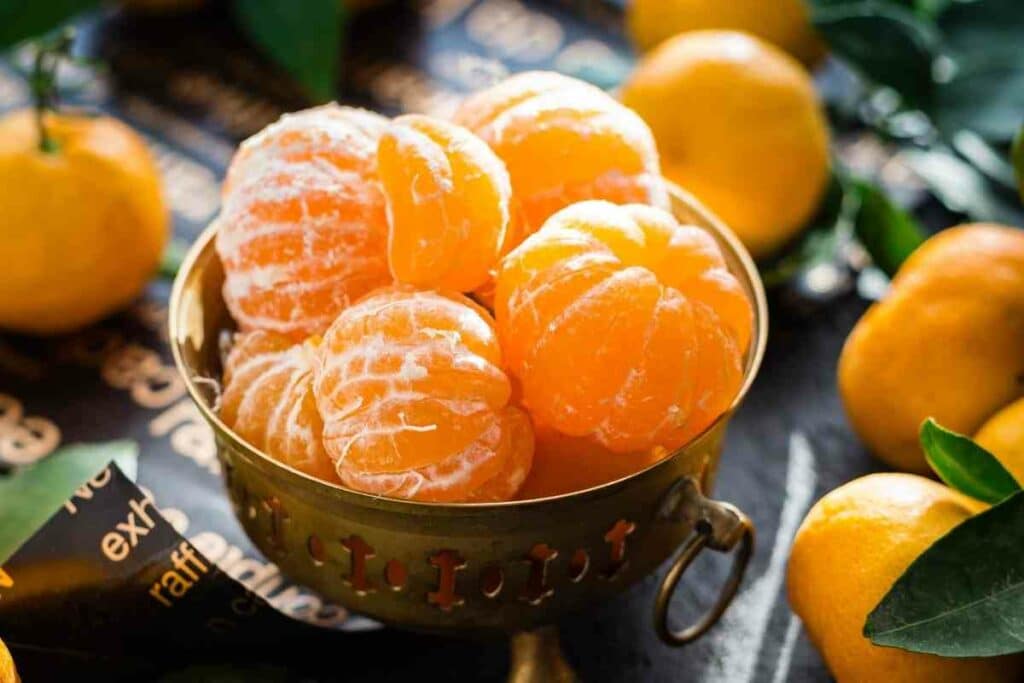
Mandarin oranges and clementines provide fiber, antioxidants, and folate to our bodies.
These aspects make them an essential part of our everyday diet. Their nutrients improve the immune systems and overall well-being.
Surprisingly – Both fruits lack vitamin D. However, they both contain very few amounts of fat and zero cholesterol. The minerals and protein content in both citrus fruits is also minimal.
However, to some people, these oranges can cause allergic reactions to the mouth and throat.
The citric acid in both oranges has various uses and benefits. It is a good preservative for food, especially baked goods.
In health and cosmetic products, it keeps them fresh for longer.
Additionally, it is an ingredient in medicine that kills bacteria and reduces urine acidity. And finally, the citric acid in oranges is used as a stain remover.
Conclusion
Although there is significant variation between mandarin oranges vs. clementines, they are both highly nutritious.
The significant differences are in their origins, physical appearance, taste, and nutritional value.
Their sweet taste and benefits to the human body make them a mandatory part of the diet.
Look out for these citrus fruits in your local grocery store and try to tell the difference.
Most times, clementines are cheaper than mandarin oranges. Always remember, all clementines are mandarin oranges, but not all mandarin oranges are clementines.
